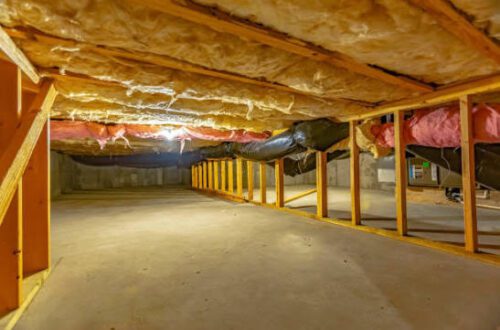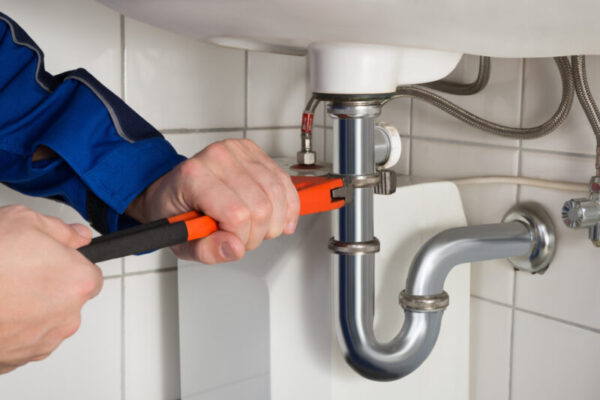Are you interested in growing flowers in your backyard? Are you thinking of building or improving your greenhouse? Keep reading to see some great greenhouse tips for building and managing one.
Caring for plants is one of the best ways to de-stress and cope with anxiety. It’s one of the reasons why people began turning to the soil when the lockdowns hit the US. Automation and the loss of wildlife also drove a big part of the population to start gardening.
If you’re thinking of bringing your garden to the next level, creating a greenhouse is a good choice. Below, we’ve got a list of useful greenhouse tips for you. Keep reading to learn what they are, as well as a few more things about greenhouses.
1. Why Build a Greenhouse?
Before we start with our tips, let’s take a look at why you’ll want a greenhouse in your backyard.
Building a greenhouse is a great way to improve your gardening experience. When you have a greenhouse, the plants you grow have an extended growing season. The environment in greenhouses makes this possible.
Because greenhouses keep plants within a shielded environment, it protects these plants. It keeps plants safe from unseasonal temperature swings and weather changes. It diffuses unnecessary sunlight as well, which gives you a healthier harvest.
Many greenhouses let you control the environment inside them. This means you can set its environment to accommodate plants that aren’t native to your region. Having greenhouses for your garden gives you a chance to grow and harvest even exotic and rare plants.
Greenhouses don’t only keep plants safe from inclement weather and unsafe temperatures. They also protect your plants from animals and pests that may damage them. If you can keep pests off your plants, you can skip using pesticides, which results in a more natural harvest.
2. Tips for Building a Greenhouse
Have you yet to build a greenhouse? Before you start, research everything you need to know. Learn important aspects of building a greenhouse, like:
- Location
- The site and building orientation
- Size and space
- Type of structure
- Kit or DIY greenhouse
- Coverings and roofing
- Flooring
- Heat gain
- Maintenance
- Sunlight and UV protection
- Irrigation and water management
Take the abovementioned into consideration when you build a greenhouse.
Lighting is another key aspect of building and setting up your greenhouse. Certain plants need supplementary lighting for a higher yield. For example, if you’re planning to grow vegetables, you’ll need supplementary lighting.
Speaking of lighting, do you have a backup plan for your plans if your power gets cut off for whatever reason? If you’re planning on making a business out of your project, always consider this possibility. For reliable solar generators, you can find them here at PoweredPortableSolar.com.
Don’t forget about water, the life-giving source. Where will you store the water? Consider which greenhouse irrigation system will work best for your crops.
Moreover, as you envision your greenhouse project, always have contingency plans in place, especially considering the possibility of a power outage. What if, during your ambitious venture to turn your greenhouse into a thriving business, unexpected disruptions occur? This is where greenhouse inventory software steps in, not only aiding in plant management but also contributing significantly to the overall resilience of your operation. Think beyond the physical structure, and embrace the digital solutions that can elevate your greenhouse cultivation experience.
3. Get All the Accessories You Need for Your Greenhouse
The next entry in our greenhouse tips is to complete your accessories. Let’s begin with automatic ventilation. Every greenhouse needs a vent through which air will pass in and out of it.
You can’t always keep your greenhouse open. You may attract insects that can become pests and destroy your plants. A good way to provide ventilation is to get automatic ventilation.
The next item you need is a propagator. This is the spot in the greenhouse where seeds first grow into seedlings. It’s a well-heated place with small pots where you prepare the next crops in line.
Water cans and rainwater collectors are also necessary for every greenhouse. In an ideal setting, you’d want your rainwater collector on the roof of your greenhouse. You’d want to use galvanized watering cans as well to ensure your crops get fresh and algae-free water.
4. Greenhouse Tips for Temperature Control
Do you feel unsure about the temperatures in your greenhouse? Are you afraid that it may have too hot or too cold an environment that can affect your crops? The best solution to this problem is to watch your maximum-minimum thermometer.
This type of thermometer can observe the temperatures in your greenhouse. It will tell you how high the temperature inside the greenhouse becomes during the summer. In the winter nights, the thermometer will help you keep an eye on the temperature.
Remember, 77 F or 25 C is the highest that you want your thermometer to go. Any temperature higher than this will damage your plants. If you’re housing frost-sensitive plants, keep the temperature at least 42 F or 5 C.
5. Greenhouse Cleaning Tips
Other than caring for plants, gardening helps people reduce stress, eat better, and reconnect. It also helps people move beyond perfectionism and develop a growth-oriented mindset.
However, these stress-reducing effects may instead get worse if cleaning it is difficult. This is why you also need to make sure that your greenhouse can survive an easy-cleaning routine. If it can’t, you may need to remove or readjust the things inside it.
Do you want to learn how to sanitize your greenhouse before your guests come to see it? Sanitizing a greenhouse is not easy. Also, it is a preventative measure more than it is a reactive solution.
This means that if you want to keep your greenhouse well-sanitized, you need to be proactive in keeping it clean. It’s a lot like your teeth. Like you brush your teeth daily to avoid plaque buildup, you need to clean your greenhouse often.
Once pests enter and make their homes inside your greenhouse, it’ll be quite difficult to remove them. Pests aren’t the only things you must worry about. You also need to make sure that algae don’t develop on moist surfaces.
Letting them develop and grow can foster fungus gnats and shore flies. Always clean any moist surfaces. Scrub, de-clutter, and sanitize your greenhouse to give it the best inside environment.
Grow Your Greenhouse Garden Now
That ends our guide on greenhouse tips and tricks. You don’t need to have a green thumb to be good at making and maintaining a greenhouse. You only need to make sure you know the basics of taking care of one as well as these tips.
Did you enjoy reading about some greenhouse tips? Do you want to keep reading our other posts related to the topic of greenhouses? Check out our other guides now to learn about managing a greenhouse and more.






